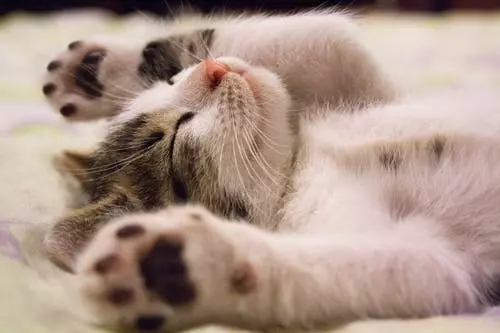**Title: Discouraging Undesirable Behaviors in Cats: Effective Strategies and FAQs**
**Introduction: Understanding and Addressing Undesirable Behaviors in Cats**
Cats, known for their independent nature, can sometimes exhibit undesirable behaviors that challenge their owners. Whether it’s scratching furniture, excessive meowing, or aggression, it’s important to understand the underlying causes and implement effective strategies to discourage these behaviors. This article aims to provide valuable insights and practical tips to help cat owners address and manage such behaviors successfully.
**I. Understanding the Root Causes of Undesirable Behaviors**
1.1. Natural Instincts: The Cat’s Perspective
– Exploring the wild instincts of cats: Cats have evolved as predators with natural instincts for hunting, territory marking, and self-defense.
– How instincts influence behavior: Understanding how these instincts influence their behavior can help us address and redirect their undesirable behaviors effectively.
1.2. Environmental Factors: Creating a Cat-Friendly Environment
– The impact of a stimulating environment: Cats thrive in an environment that provides mental and physical stimulation. Boredom can lead to destructive behaviors.
– Providing appropriate outlets for natural behaviors: Enriching your cat’s environment with scratching posts, toys, and interactive playtime can redirect their natural behaviors to more appropriate outlets.
1.3. Health Issues: Identifying and Addressing Underlying Problems
– Common health issues affecting behavior: Certain medical conditions like urinary tract infections or dental problems can lead to changes in behavior.
– The importance of regular veterinary check-ups: Regular check-ups can help identify and address any underlying health issues that may be contributing to your cat’s undesirable behaviors.
**II. Effective Strategies for Discouraging Undesirable Behaviors**
2.1. Scratching Furniture and Inappropriate Surfaces
– Understanding the purpose of scratching: Cats scratch to mark their territory, stretch their muscles, and maintain their claws.
– Providing suitable scratching posts and deterrents: Investing in high-quality scratching posts, using catnip or pheromone sprays, and providing alternative surfaces can redirect their scratching behavior.
2.2. Excessive Meowing and Attention-Seeking Behavior
– Identifying causes of excessive meowing: Cats may meow excessively due to hunger, loneliness, or boredom.
– Techniques to manage attention-seeking behavior: Ensuring regular playtime, providing interactive toys, and establishing a consistent routine can help manage attention-seeking behaviors.
2.3. Aggression Towards Humans or Other Pets
– Recognizing different types of aggression: Aggression can be fear-based, territorial, redirected, or play-related.
– Behavioral modification techniques and professional help: Positive reinforcement, desensitization, and seeking guidance from professionals can help manage and modify aggressive behaviors.
2.4. Inappropriate Elimination: Litter Box Issues
– Addressing litter box aversions and preferences: Identifying and addressing any issues with the litter box, such as cleanliness or location, can help prevent inappropriate elimination.
– Tips for successful litter box training: Gradual introductions, appropriate litter choices, and positive reinforcement can help train your cat to use the litter box consistently.
2.5. Nighttime Activity and Sleep Disturbances
– Promoting a healthy sleep routine for cats: Providing a quiet and comfortable sleeping area can help cats establish a regular sleep routine.
– Strategies to discourage nighttime activity: Engaging in interactive play before bedtime, providing mental stimulation during the day, and using deterrents can help discourage nighttime activity.
**FAQs: Common Concerns About Discouraging Undesirable Behaviors**
Q1. How long does it take to see improvements when using behavior modification techniques?
Q2. Should punishment be used to discourage undesirable behaviors in cats?
Q3. Can neutering or spaying help reduce aggression or other behavior problems?
Q4. What are some effective ways to redirect a cat’s scratching behavior?
Q5. How can I prevent my cat from urinating outside the litter box?
Q6. Is it possible to change a cat’s nighttime activity patterns?
**Conclusion: Building a Harmonious Relationship with Your Feline Companion**
By understanding the underlying causes of your cat’s undesirable behaviors and implementing appropriate strategies, you can create a harmonious environment for both you and your feline companion. Remember that patience, consistency, and positive reinforcement are key when addressing behavioral issues. If problems persist, seeking guidance from a veterinarian or professional animal behaviorist can provide further support in managing and modifying your cat’s behavior.








